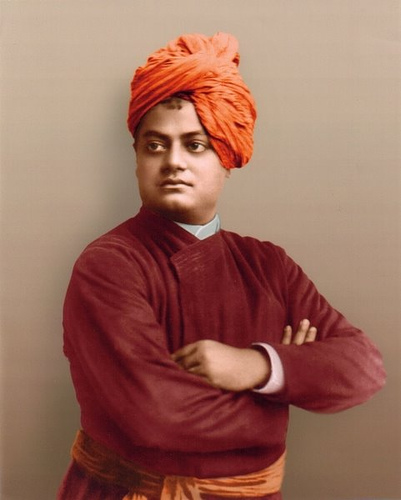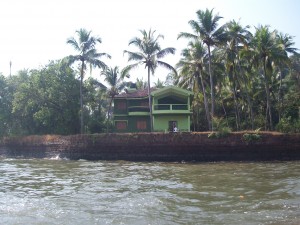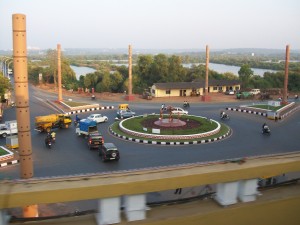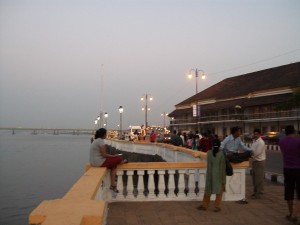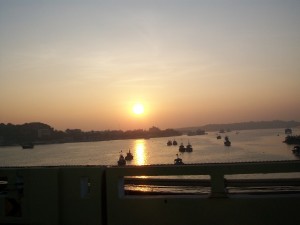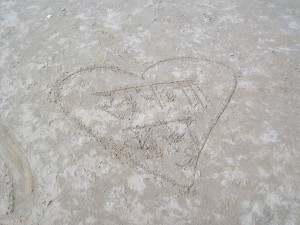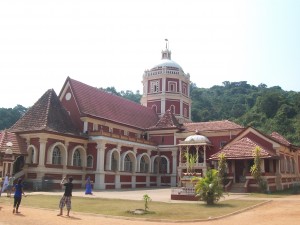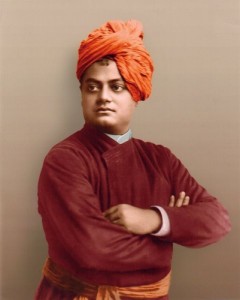Travel Post: Goa is not exactly what we see in Bollywood!
By: Keyur Seta
Three weeks back, I finally got a chance to visit Goa for the first time in my life. Since I had never seen the place before in real, all my knowledge about the place came from Hindi films. As almost all Bollywood films have portrayed the place in the same manner (except few films like Dum Maaro Dum), not since years but decades, I kind of developed an image of the place from what I have been seeing on celluloid.
This is how Hindi films have portrayed Goa:-
- Goa is all about beaches. In fact, beaches are the only things worth seeing in the place.
- The place is thronged by hardcore party lovers who consume as much beer or some liquor as we consume water. Of course, some of the males have to be topless and the females, skimpily clothed.
- Every now and then you will come across a person humming a song in English or their local language while playing a guitar. It is mandatory for the person to wear a typical Goa shirt (with pictures of coconut trees), shorts and of course a big hat made out of cane.
- Locals add the word ‘man’ after every sentence while speaking Hindi. Examples – 1) Hi man! 2) Kaisa hai man? 3) Kya baat kar raha hai man? 4) God tumhara prayer zaroor sunega man.
(To follow us on Facebook, click HERE.)
Due to such portrayal of Goa, I wasn’t too keen on visiting the place, more so because I am not fond of beaches and I simply can’t stand these so-called parties with liquor. But since I badly needed a change, I went ahead with the trip. And today as I look back, I think it was one of the best decisions of my life. The reason I am saying this is because Goa is much, much more than what Hindi films have shown us. Of course, the above mentioned scenarios are experienced over there but, from what I saw, not often.
As surprising as it may sound, I found Goa very serene and peaceful. I experienced this not only in the locality where we stayed (Calangute) but also in the places we visited – the peaceful Thivim Railway station, Avenida Dom Jao Castro Road in Panaji, Sinquerim Beach, Fort Aguada, Vagator Beach, Dona Paula, Basilica of Bom Jesus, Shantadurga Temple and lastly Margao (Maybe you can feel the same in the pictures posted here). A lot of calmness is also felt while travelling from one destination to the other as one could see the beautiful small houses or huts, local shops, a group of locals chit chatting under a tree in villages, lakes, forests, picturesque mountains, small roads of small towns, etc.
I firmly believe that the beauty of a particular place multiplies if the locals are warm hearted and sweet. After my experiences and interactions with the locals in Goa, I can surely say the same for Goa. This definitely adds on to the peace. The big example of this was our guide Ramakant. Although he was hamming his way while explaining the places, it was his sweet and friendly nature that stood out.
But another thing that hugely impressed me is the cleanliness practiced by the people (even on the beaches) and the civic maintenance in every part of Goa. I hardly saw any litter or waste lying on the roads. I don’t even recollect anyone spitting on the streets. Although this increased my respect for the place, it also made me feel bad thinking about the state of my hometown Mumbai where people consider the whole city as a dustbin, toilet and what not.
And talking about the civic body of Goa, I feel the BMC (Brihanmumbai Municipal Corporation) is a big joke in comparison to it. The former not only makes sure the place is clean and tidy but also puts in lots of effort and money to add beauty to the place. So henceforth, I would laugh at anyone who would label Mumbai as the most developed city. Insanely building more and more skyscrapers, letting miscreants destroy the city and unnecessarily buying cars thereby adding on to the traffic is certainly not development.
So regardless of what Hindi films show, the real Goa is seen only after visiting it. From the points mentioned above, it is needless for me to say that I will visit the place again.
(To follow us on Facebook, click HERE.)
Some more pictures: –
Satyameva Jayate: God’s interpretation on human division
By: Keyur Seta
Time and again we keep saying India has developed over the decades. To justify our statement, we give examples of the emergence of malls, multiplexes, technological brilliance (laptops, smart phones, etc), skyscrapers, rail metros, high paying jobs in cities, etc. However, when it comes to equality and humanism, I am sorry to say India is one of the most underdeveloped nations. This is exactly what I thought after watching yesterday’s (July 8) episode of Aamir Khan’s Satyameva Jayate, which showed how inequality on the basis of caste is still prevalent in India in the most inhuman of levels!
No matter how much we develop in terms of science, technology and urbanization, we can never be called developed in the true sense as long as this cruel differentiation among the same species continues. In order to be called one, we need to develop a mindset similar to Justice Chandrashekhar Dharmadhikari. He is the real hero of India who proudly revealed on the show how he has discarded all identities born out of biological accidents (religion and caste).
(Article continued after picture.)
Following is my fictional interpretation of God’s reaction to this mindless man-made division amongst humans: –
One day, God was sitting with an expression of worry and disappointment. Seeing this, his disciple asked him, “Why are you looking so dejected?” God looked up to him and said, “I feel this way every time I look at humans living on earth. Thousands of years ago, I created humans, hoping them to be the most intelligent of all animals. But today when I look down, I am hardly able to find any humans. All I can see is Hindus, Muslims, Brahmins, Shudras, Kshatriyas, Christians, Parsis and what not!
“When I created them, I took special care in creating everyone physically and emotionally alike. Yet, they have created this division amongst them. If I have not created any difference between them, who are they to do so? Are they trying to show they are superior and more intelligent than me? What’s worse is, they have killed millions of people from their own species on the basis of the differentiation which they themselves have created! I feel insulted by my own creation!
“Well, like every time, I would now like to concentrate on other animals. They make me feel much better although they are unable to speak and are not as intelligent as humans. At least, they have preserved the identity which I gave them and have not divided themselves mindlessly.”
 Social worker Bezwada Wilson provided a very interesting and easy method of degenerating caste system – inter-caste marriage. He rightly criticized those parents who strictly wish to get their child or children marry someone from their own caste. According to me, such parents are indirectly giving fuel to the inhuman caste system and encouraging the so-called superior castes to oppress the wrongly titled lower castes.
Social worker Bezwada Wilson provided a very interesting and easy method of degenerating caste system – inter-caste marriage. He rightly criticized those parents who strictly wish to get their child or children marry someone from their own caste. According to me, such parents are indirectly giving fuel to the inhuman caste system and encouraging the so-called superior castes to oppress the wrongly titled lower castes.
Many might argue that they are just following traditions and some religious books. But what’s the need to follow those traditions and religious books which divide humans and oppress innocents? To hell with such traditions and so-called religious books! After blindly following something so terrible, it’s high time the word caste is reduced to ashes!
Watch the eye-opening episode of Satyameva Jayate on caste system and untouchability: –
Music Has No Language!
By: Keyur Seta
Music Has No Language – I have heard this phrase time and again but never really believed in it. In 2000, when I boarded a train for Jaipur from Mumbai Central station, I didn’t have an iota of idea that I would start believing in it after the end of the journey. Almost all pleasant experiences in my life have taken place in the most unexpected situations. This was one such instance.
When our train entered the territory of Rajasthan, I was all excited and eager to reach Jaipur. Just an hour or so before reaching the final destination, an usual sound startled me when I was busy appreciating nature during the journey. Initially it irritated me as I don’t like being disturbed when I am relishing nature from my window seat. I saw it was some performer playing a musical instrument in order to raise money (I will never call him a beggar).
 After half a minute of or so, I started liking the sound. Then came the big splash! The man, while playing the instrument, also started singing. Within seconds my whole attention was hooked onto him as I was super impressed by his voice and style.
After half a minute of or so, I started liking the sound. Then came the big splash! The man, while playing the instrument, also started singing. Within seconds my whole attention was hooked onto him as I was super impressed by his voice and style.
The passion with which he sang, the pain and anguish in his voice, his dedication, all sent me in a musical trance from which I didn’t want to return. It was that kind of satisfaction which one experiences at a concert after paying a hefty amount for the ticket. But here it was, all for free. Well, not quite. I paid him before he even asked for it.
But in all this, where does the phrase ‘music has no language’ fit in? It does fit in for the man was singing in Rajasthani language. As I don’t understand that language, I hardly understood the song or its meaning. But still, it produced one of the most long lasting and impressive musical effects on my mind. Hence, I started believing that music has no language. It all happened in a totally unexpected situation. Such is the magic of Indian Railways where almost every journey becomes memorable!
Vivekananda 150th Anniversary Celebrations in Mumbai
Ramkrishna Mission Mumbai and Bhavan’s Cultural Centre (Andheri) have organized a variety of cultural programs in Mumbai to celebrate 150th birth anniversary of Swami Vivekananda. The day is also celebrated as National Youth Day across India.
Events: A mono act play on Vivekananda by Shekhar Sen. There will also be few other plays on the great disciple of Ramkrishna Paramhansa along with dance, skits and elocution performances. There will be an atmosphere of festivity throughout the event.
Time: 3pm to 9pm
Address: Bhavans Campus, Convocation Centre, Kalangan No 1, Behind Wadia High School, D N Nagar Cross Road No. 1, Andheri (West), Mumbai (Ample parking space).
NO ENTRY FEE. ALL ARE WELCOME!
How Swami Vivekananda enlightened me!
Some time back, I came to know that social worker Anna Hazare’s inspiration to serve the country was none other than the great Swami Vivekanand. Since I am a great admirer of Hazare, I became utterly curious to know about the life and teachings of the person who inspired him.
Just when I was thinking of grabbing some book on Vivekananda, I came to know from Ramkrishna Mission (Mumbai) that a play will be staged in Mumbai based on the life of the great disciple of Ramkrishna Paramhansa in order to celebrate his 150th birth anniversary. It would be an understatement to say that I grabbed the opportunity with both hands.
The play is titled Yuganayak Swami Vivekananda. It is conceived and directed by Dr Vikram Panchal while the script is written by Panchal and Qais Jaunpuri.
Among the various defining moments of Vivekananda’s life shown in the play, I would like to highlight the following:-
 Fear: The play starts with Vivekananda stressing the importance of having no fear of anything or anyone in the world. You can say it was an electrifying start to the play since the way the actor uttered the lines, the audience experienced terrific josh which was felt by the huge applause!
Fear: The play starts with Vivekananda stressing the importance of having no fear of anything or anyone in the world. You can say it was an electrifying start to the play since the way the actor uttered the lines, the audience experienced terrific josh which was felt by the huge applause!
Rationalism: Vivekananda wanted a rational proof for the existence of God. It was touching to see his quest to literally see the almighty.
Religion: Vivekananda and his family, although staunch Hindus, had equal respect for other religions like Islam and Christianity.
Caste: After enlightening people at a village, Vivekananda was hungry since three days but nobody offered him food. After three days, he accepted food from a Chamaar (people from the lowest caste). This infuriated and offended the Brahmins (people from the highest caste). Even the Emperor of the kingdom was taken aback by this.
From here on, the way Vivekananda explains the absurdity of the caste system is worth applauding again and again! His simple explanation was – A man should be judged higher or lower according to his karma (deeds) and not birth!
Idol Worship: During a visit in a kingdom, an emperor and his disciples opined to Vivekananda that idol worship is blind faith. According to them, just by giving shape to a stone, how can you consider it as God? To this, Vivekananda got hold of the emperor’s photo and asked one of his disciples to spit on it.
The disciple, along with everyone, was aghast! Vivekananda explains that just as you respect your emperor’s photo as you see him in it; devotees respect the idol as see their God in it.
Western Music: I was really surprised to know that Vivekananda was not only an admirer of western music but also possessed great knowledge in it.
Books: The way Vivekananda highlights the importance of reading books can develop an interest in reading in just anyone.
Encounter with Tata: I was also surprised to see Vivekananda stressing importance of science and technology for the development of the nation while conversing with Jamshedji Tata. His interaction with the founder of Tata industries was one of the most memorable scenes ever!
Chicago: Lastly, there was maximum applause from the crowd when Vivekananda highlighted the importance of Bhagwad Gita and India at Chicago.
After experiencing the play, I can say my perspective towards life has changed and I am feeling a great deal of positivity within me. I wonder what kept me away from such enlightenment all these years. Well, it’s better late than never. Now, I have become a disciple of Swami Vivekananda for life!
Swami Vivekananda play to be staged in Mumbai
On the occasion of the 150th birth anniversary of Swami Vivekanand, a Hindi play will be staged in Mumbai based on him. The play is titled Yuganayak Swami Vivekanand and it will focus on the life and principles of the great disciple of Ramkrishna Paramhansa.
Title: Yuganayak Swami Vivekanand
Presented By: Adhyatma Vidya Mandir Ahmedabad and Vikram Academy of Performing Arts
Director: Dr Vikram Panchal
Date: Sunday January 8, 2012.
Time: 9:30am
Venue: Bhaidas Auditorium, Juhu Scheme, Road No. 1, Vile Parle (West), Mumbai – 400056.
The play is free for all but one needs to collect passes from the office of Ramkrishna Math at Khar or call Jayesh Shroff on 9820293242.
Traditional Blindness!
The more views this post of mine gets, the more are the chances of me facing the wrath especially from the likes of Sooraj Barjatya, Ekta Kapoor and their followers. Contradictory to your thoughts, I am not thrashing the genre of movies and serials they produce (that will require me to write a book than a mere blog post). The thing which I am going to express has been going in my mind since years. Finally, I have found time to explode this thing onto my blog, without giving a damn to the criticisms and gaalis!
Before starting off, I would like to make myself clear that I have deep respect for Indian culture and traditions. However, there are some beliefs and practices which appear to me as plain stupid or illogical. I am not one of those huge majority of Indians, who unquestionably and blindly follow some beliefs despite being aware of its absurdity. So, here’s the list of those practices or beliefs which I find trashy: –
 Husband-Worship: A husband and a wife are considered life partners. They are two people who have decided to stay together since they love each other (in most of the cases I suppose). If this is the case, then why the hell is the wife expected to give a Godly status to her husband? Why does the society make the husband look superior to his wife by promoting beliefs like Pati parmeshwar hota hai and Patni ki jagah pati ke charanon mein hoti hain? The man is not doing any ehsaan on the girl or her family by marrying her. After all, isn’t he in need of a wife just like the girl is in need of a husband?
Husband-Worship: A husband and a wife are considered life partners. They are two people who have decided to stay together since they love each other (in most of the cases I suppose). If this is the case, then why the hell is the wife expected to give a Godly status to her husband? Why does the society make the husband look superior to his wife by promoting beliefs like Pati parmeshwar hota hai and Patni ki jagah pati ke charanon mein hoti hain? The man is not doing any ehsaan on the girl or her family by marrying her. After all, isn’t he in need of a wife just like the girl is in need of a husband?
- Right-Hand Theory: Innumerable times during my childhood I was ordered not to use my left hand while accepting prashaad or money. Yes, I know the left hand is used for some ‘other’ thing but don’t we wash our hands or take a bath after that activity? So what’s the big deal in using that hand? It’s just a part of our body yaar! And if the hand is considered so inauspicious, don’t use it for any purpose and just keep it reserved for ‘that’ activity. If discrimination amongst people on the basis of religion, region or caste isn’t enough, we also have discrimination between our body parts!
- Karvachauth Hangover: After following innumerable number of movies and serials, these wives keep Karvachauth Ka Vrat for the long life of their husbands. But the big question remains – why only the wife prays for her husband’s long life and why not vice versa? And by the way, how can anyone be a fool enough to believe that such a thing actually increases someone’s life span? What biological changes does the body experience that increases the life expectancy due to this bloody vrat?

- A Curse in Disguise: It is annoying to see phrases like ‘Sada Suhagan Raho’ and ‘Akhand Saubhagyawati’ being considered as the most auspicious of blessings. It is indirectly telling the girl, “Bhagwan kare tere pati ke pehle tu mare!” How can you hope or wish for someone’s death? Or do these people still believe that a woman won’t be able to live alone even in today’s era? You talk of women’s liberation but at the same time keep promoting such curses. Why not a single pro-women group has ever raised its voice against such a ghastly gender bias?
Today, modernism is only limited to clothes, appearance and way of speaking while the thinking continues to remain backwards courtesy these beliefs. Our society will be truly modern only when logic and equality will rule every institution and phenomenon. Until that time – Andhera Kaayam Rahen!
- « Previous Page
- 1
- …
- 3
- 4
- 5
